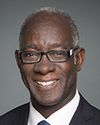Thank you for your question.
Of course the demographic projections are based on hypotheses and scenarios. We have developed a good many such scenarios by factoring in trends observed over the previous 15 years before the 2011 census or the National Household Survey. By using these and closely examining these trends, we can achieve an in-depth analysis through what we call microsimulation. We assign a probability to every Canadian, of experiencing an event in the course of their existence, which is to migrate, learn a language, give birth to a child, or something else. We know, for example, that people who have just had a child are less likely to move to another province for a number of years. All of this is taken into account. It's extremely complex.
However, given that the mother tongue of most of the immigrants who come to Quebec is neither English nor French, it's not surprising to see that French as a mother tongue should be decreasing significantly in that province. That was among the important results we observed. There was a major increase in the number of English-language immigrants in recent years in Quebec. Even taking the relative weight into her account, it would appear that generally speaking, more immigrants tend to adopt English than French. Ultimately, it means that these immigrants will increasingly tend to use English than French.
However, contrary to what many people might think, on Montreal Island, a steady 66% of the population reported their first spoken official language to be French. We are not necessarily expecting a decrease, because there is a growing percentage of migration on Montreal Island tending towards the crown. On the other hand, there is a significant increase in the English-language population in Laval and on the South Shore. This naturally contributes to a decline in the relative weight of French as the language spoken at home.
Don't forget—and this is no doubt the most serious challenge that leads us to examine the various indicators—that the language transfers for the other mother-tongue population is not strong enough to offset the growth of this population over the long term.




